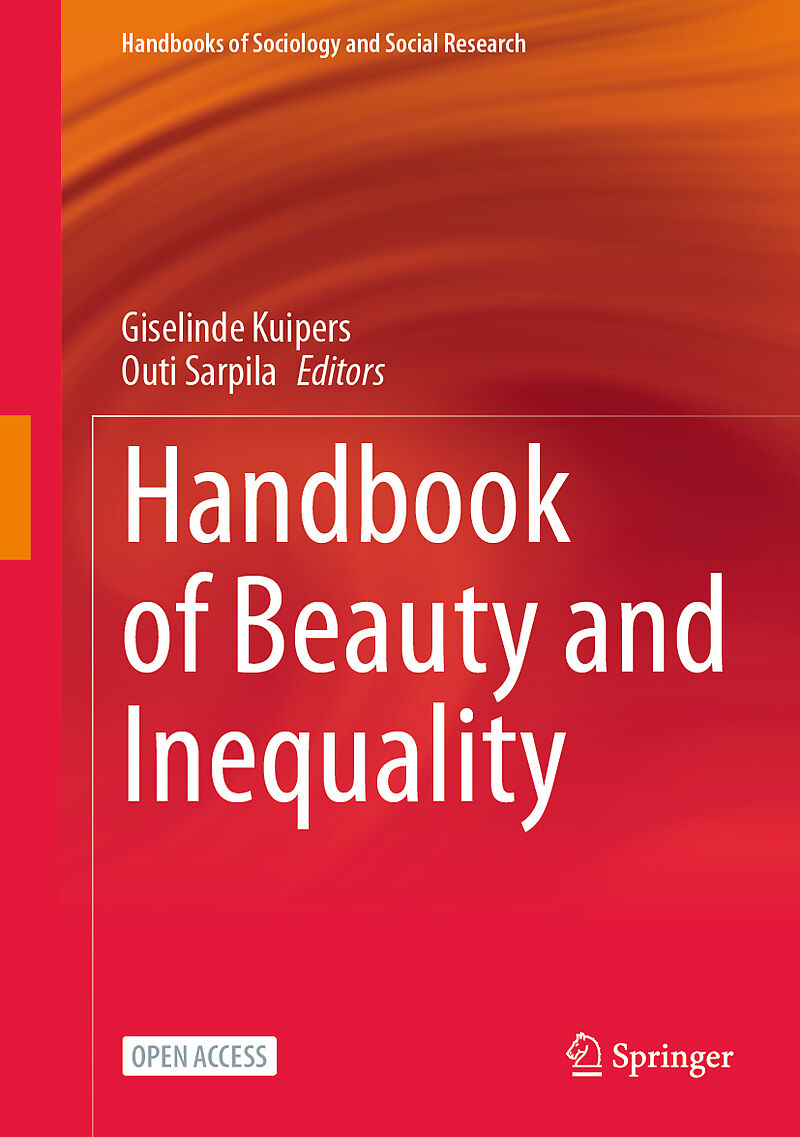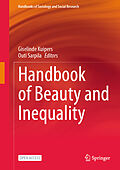

Handbook of Beauty and Inequality
Beschreibung
This open access handbook offers a state-of-the-art overview of theoretical perspectives, empirical insights and scholarly debates into the relationship between beauty and inequality: how does beauty shape and reproduce social inequalities, and how does socia...Format auswählen
- Fester EinbandCHF 70.70
Wird oft zusammen gekauft
Andere Kunden kauften auch
Beschreibung
This open access handbook offers a state-of-the-art overview of theoretical perspectives, empirical insights and scholarly debates into the relationship between beauty and inequality: how does beauty shape and reproduce social inequalities, and how does social inequality shape appearance and beauty standards? This comprehensive review emerges out of the burgeoning research on appearance and inequality in recent years. The handbook brings together under one volume the widely dispersed research on this topic which uses different concepts, approaches and methods, often without reference to one another. It does so by pulling together knowledge on appearance and inequality from different subfields of sociology, cultural studies, anthropology, gender studies, philosophy, management studies, communication and media studies, economics, legal studies, gerontology, psychology and evolutionary psychology, and creates talking points between and within disciplines. It presents different conceptualizations of beauty, including beauty as morality, capital, stigma, asset, merit and fashion. It also focuses on mechanisms linking beauty to inequality, drawing mainly on quantitative and analytical approaches, and looks at intersections between beauty and various axes of inequality. Finally, the work highlights institutional approaches to various fields in which beauty standards are created and reproduced. The chapters are written by established scholars from a range of disciplines and countries and discuss the literature, while also presenting original empirical research. This is a highly useful and handy resource for anyone interested in learning more about the field.
This is an open access book.
Autorentext
Giselinde Kuipers is a Research Professor of Sociology at the KU Leuven in Leuven, Belgium. She is a pioneer of research on beauty and inequality, and has expertise in cultural and media sociology, visual methods and mixed-methods designs. Her innovative ERC-funded mixed-methods project on the sociology of beauty and inequality was one of the first sociological studies on the topic. In 2022, she received her second ERC grant for her project Beauty and Inequality: Physical Appearance, Symbolic Boundaries and Social Dis/advantage in Five Global Cities. She has published extensively on beauty and inequality. She has also served as editor-in-chief for scientific journals and co-edited edited volumes, including the Handbook of Humour Studies.
Outi Sarpila is a Senior Research Fellow at INVEST Research Flagship Centre, University of Turku, Finland. Sarpila's areas of expertise include physical appearance-based social inequalities, economic sociology, and quantitative research. She has led two national research projects related to physical appearance and inequalities. She has published widely on the topic both in Finnish and English. She is a co-author of the book Ulkonäköyhteiskunta [Appearance society] which was nominated for the Scientific Book of the Year 2019 in Finland. From 2019 to 2023 she served as a co-editor-in-chief of the Finnish Journal of Social Research, and in 2021 she co-edited the book Appearance as Capital.
Inhalt
Introduction. Beauty and Inequality: New Questions for a Fragmented Field.- Part I: Beauty.- Beauty as Subordinate Capital.- Beauty and Morality.- Sexual Capital.- Evolutionary Approaches to Beauty.- Beauty as Gendered Inequality.- Beauty as Evaluation.- Beauty and Meritocracy.- Part II: Mechanisms.- Beauty and Romantic Outcomes.- Beauty and Romantic Outcomes.- Beauty and Hiring Discrimination.- Beauty and Social Capital.- How Beauty Impacts Life Satisfaction: Objective, Subjective and Mediating Effects.- Beauty, Media Representations and Body Image.- Looking Right for the Job: Appearances, Unequal Chances, and Gatekeeping in the Labor Market.- Part III: Intersections.- Beauty, Gender, and Ageing.- Beauty, Race/Ethnicity, and Gender Inequalities.- Beauty, Bodies and Elites.- Body Size and Social Class: Beauty and Stigma in a Tale of Two Habitus.- Clothing, Beauty and Inequality.- Beauty, Gender and Parenthood.- Beauty Regimes and Global Inequalities.- Part IV: Fields.- Cosmetic Surgery.- Beauty and Work: Continuity and Change in the Analysis of Aesthetic Labour.- Sexual Fields and Women s Sexual Capital: Online Challenges and Insights.- Beauty and Teaching.- Beauty, Dating, and Desirability.- Beautyvism: Beauty as a Political Tool.- Beauty and Fashion.- Lookism: the Morality of Appearance Discrimination.
